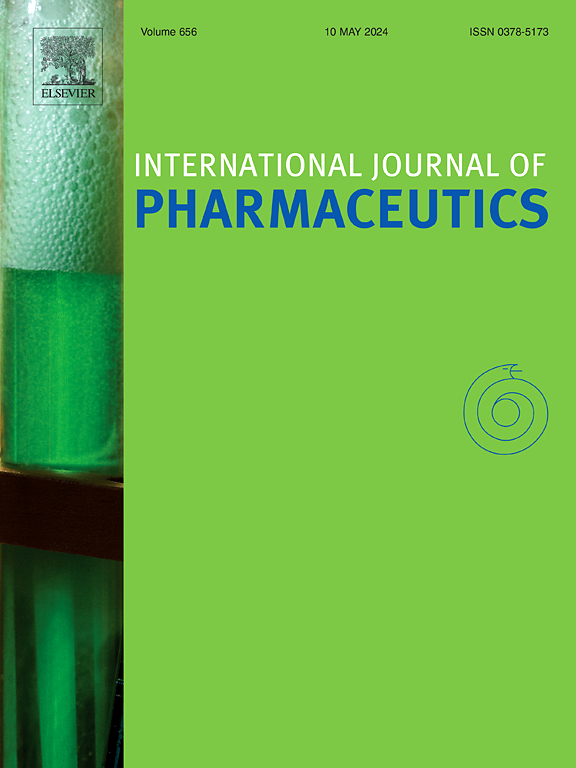精确靶向爆炸的仿生纳米颗粒有效治疗葡萄膜黑色素瘤。
IF 5.3
2区 医学
Q1 PHARMACOLOGY & PHARMACY
引用次数: 0
摘要
葡萄膜黑色素瘤(UM)是成人最常见的原发性眼内恶性肿瘤,起源于葡萄膜内的黑色素细胞。目前,眼部肿瘤的治疗主要依靠传统的方法,如近距离治疗和去核。尽管葡萄膜黑色素瘤(UM)的药物治疗选择有限,但眼部给药的有效性受到眼部局部给药屏障和复杂肿瘤微环境(TME)的阻碍。为此,设计了具有主动靶向能力的仿生低密度脂蛋白纳米颗粒(LD-DPVP NPs)。该纳米药物系统将光敏剂(维替波芬,VP)与肿瘤血管正常化药物(地塞米松,DEX)联合使用,实现了对眼内肿瘤的低毒、高效治疗。经静脉注射后,纳米颗粒选择性靶向肿瘤部位,诱导VP产生活性氧(ROS),在近红外激光刺激下杀死肿瘤细胞。所产生的活性氧还可以触发DEX前体药物(DPD)的断裂,并通过破坏硫醚键(TK)快速释放DEX。此外,DEX可以调节TME,改善纳米颗粒向肿瘤的递送,进一步增强LD-DPVP NPs的疗效。我们相信本研究设计的仿生纳米颗粒在抑制UM生长方面具有潜在的临床应用价值,并为治疗其他眼部恶性肿瘤提供了有希望的策略。本文章由计算机程序翻译,如有差异,请以英文原文为准。
Precision-targeted explosion of biomimetic nanoparticles for the effective treatment of uveal melanoma
Uveal melanoma (UM) is the most prevalent primary intraocular malignancy in adults, originating from the melanocytes within the uvea. Currently, the treatment of ocular tumors predominantly relies on conventional approaches such as brachytherapy and enucleation. Despite the limited pharmaceutical treatment options for uveal melanoma (UM), the effectiveness of ocular drug delivery is hindered by the ocular barrier to local drug administration and the complex tumor microenvironment (TME). In response, biomimetic low-density lipoprotein nanoparticles (LD-DPVP NPs) with active targeting capabilities were designed. This nanodrug system combined photosensitizer (verteporfin, VP) with the tumor vascular normalization drug (dexamethasone, DEX) to achieve low-toxicity, high-efficacy treatment of intraocular tumors. After intravenous injection, the nanoparticles selectively targeted the tumor site and induced VP to produce reactive oxygen species (ROS) that killed tumor cells under near-infrared laser stimulation. The produced ROS could also trigger the cleavage of the DEX prodrug (DPD) and rapid release of DEX via breakage of the thioether bond (TK). Additionally, DEX could modulate the TME, improving the delivery of nanoparticles to the tumor and further enhancing the efficacy of LD-DPVP NPs. We believe the biomimetic nanoparticles designed in this study have a potential clinical application value in inhibiting UM growth and provided a promising strategy for addressing other ocular malignancies.
求助全文
通过发布文献求助,成功后即可免费获取论文全文。
去求助
来源期刊
CiteScore
10.70
自引率
8.60%
发文量
951
审稿时长
72 days
期刊介绍:
The International Journal of Pharmaceutics is the third most cited journal in the "Pharmacy & Pharmacology" category out of 366 journals, being the true home for pharmaceutical scientists concerned with the physical, chemical and biological properties of devices and delivery systems for drugs, vaccines and biologicals, including their design, manufacture and evaluation. This includes evaluation of the properties of drugs, excipients such as surfactants and polymers and novel materials. The journal has special sections on pharmaceutical nanotechnology and personalized medicines, and publishes research papers, reviews, commentaries and letters to the editor as well as special issues.

 求助内容:
求助内容: 应助结果提醒方式:
应助结果提醒方式:


